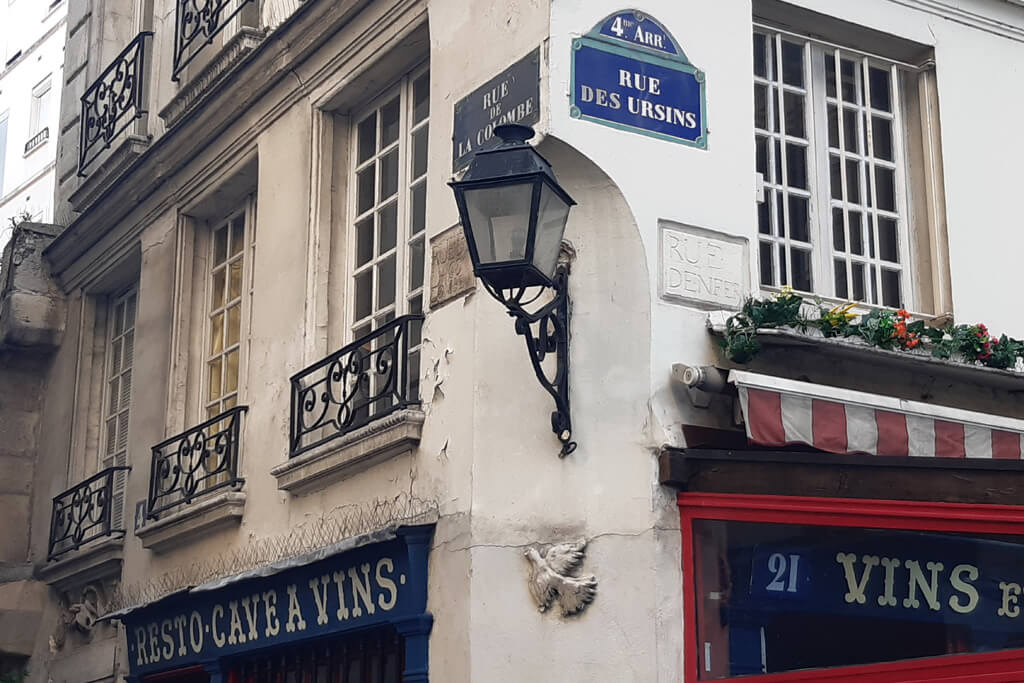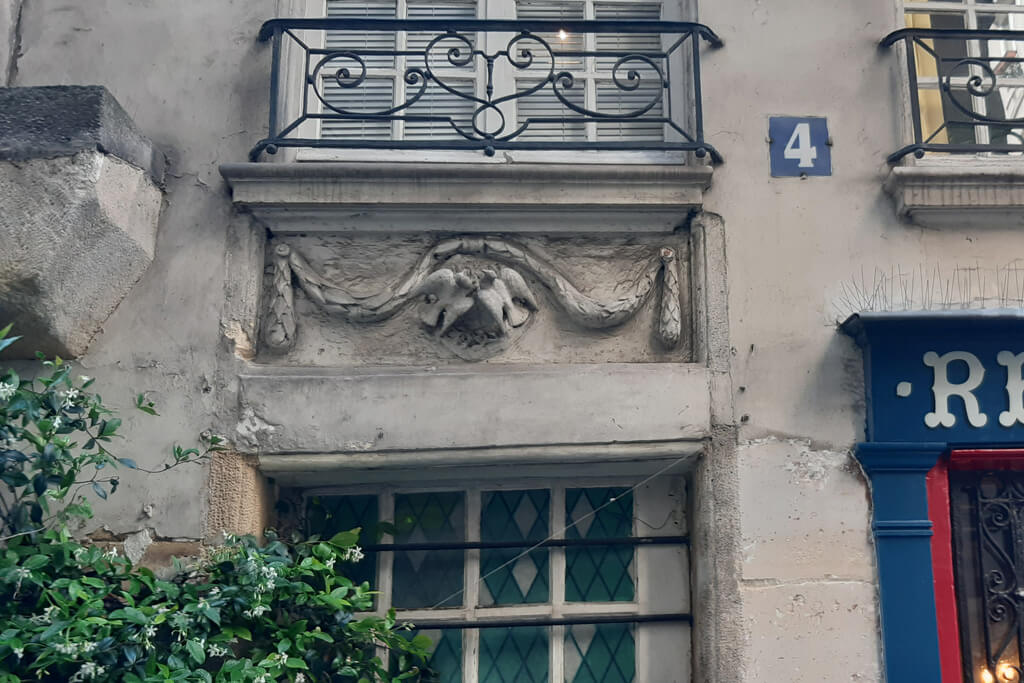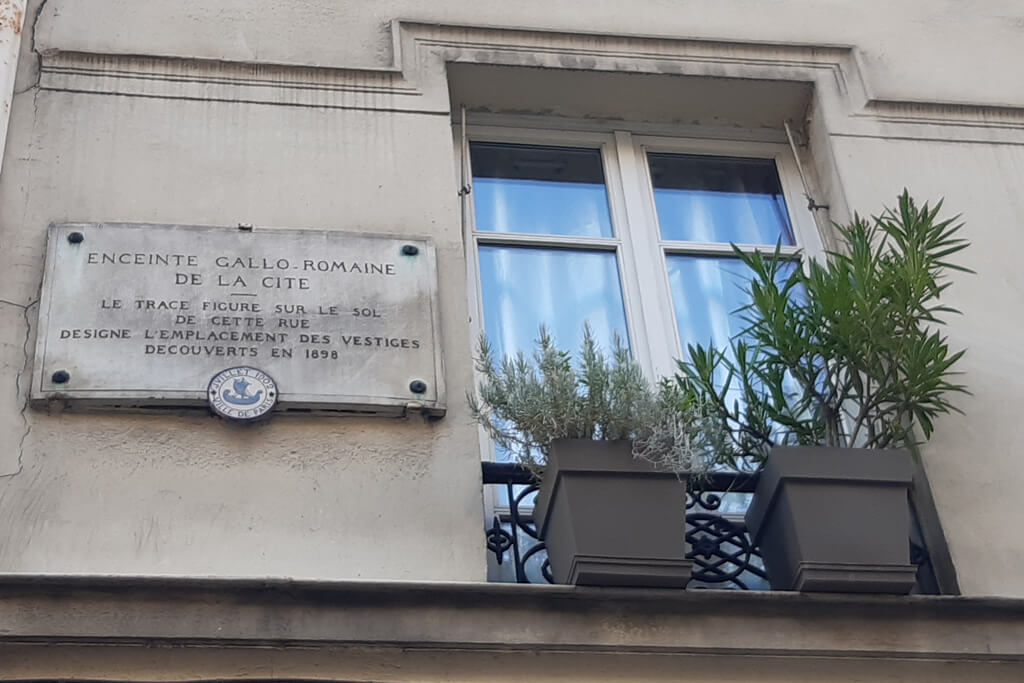Ile de la Cité is a great area for a stroll. Here, you will find some of the oldest streets in Paris and also many hidden gems.
While strolling in Ile de la Cité, don’t miss Rue de la Colombe (Dove Street), an old narrow street perpendicular to Quai aux Fleurs, not far from Pont d’Arcole. Here, there are a couple of curiosities worth a stop.
Maison de la Colombe

Rue de la Colombe is named after the Maison de la Colombe (Dove House) located at number 4. The two doves sculpted on the door’s lintel recall curious wanderers their moving love story.
Around 1225 this place was occupied by a dilapidated one-story house. The first floor was inhabited by a sculptor who used to shelter a couple of tamed doves. When the house collapsed in his absence, the two doves were trapped in the stones.
The male dove managed to escape, but he did not want to leave without his companion, and he continued to feed her with seeds and water from the river Seine.
The dove’s loyalty attracted the neighbors’ attention, who helped remove the stones one by one to free the female dove. Today, a plaque located at one of the ends of the street recalls this legend.

The Oldest Bistro in Paris
4 rue de la Colombe Paris was also home to the oldest bistro in Paris, dating from the 16th century! The bistro changed hands many times until 1954, when new owners took over the business and turned it into a cabaret named La Colombe.
La Colombe became one of the most famous Parisian cabarets on the Seine’s left bank and helped to launch the career of many young talents. The cabaret worked until 1964, when, due to many debts and unpaid bills, the owners were forced to close.
Today, 4 rue de la Colombe hosts a restaurant with a terrace named Les Deux Colombes, proposing French cuisine with beautifully presented dishes and friendly, efficient service. Even if this is a new restaurant (2020), Les Deux Colombes has already very good ratings.
Lutetia’s Roman Walls
A little bit further, at 6 rue de la Colombe, an inscription in the sidewalk recalls the discovery of the remains of the first wall in Paris, raised in 276 AD to resist the Barbarian invasions.
Fifteen hundred meters long, seven to eight meters high, and two and a half meters wide (4 meters at the base), the Paris – Lutetia walls included most of Lutetia’s island, and they are today one of the few remains of Roman Paris still visible.


Here at rue de la Colombe, we can notice the silhouette marking the wall’s limit: inside the walled city on the left and outside the city below.


